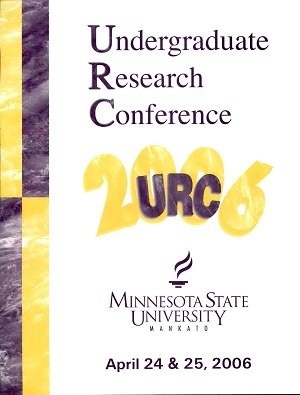Intentionality in Kant and Wittgenstein
Location
CSU 253
Start Date
25-4-2006 8:45 AM
End Date
25-4-2006 10:15 AM
Student's Major
Philosophy
Student's College
Arts and Humanities
Mentor's Name
Richard Liebendorfer
Mentor's Department
Philosophy
Mentor's College
Arts and Humanities
Description
How is thought about and experience of a world possible? This has been the framing question of the present work and it is generally understood as the problem of intentionality. The more specific problem dealt with has been whether or not intentionality has an internal structure that can be made explicit through science, particularly cognitive science. In his Critique of Pure Reason, Immanuel Kant outlines an internal, mental structure that, when imposed on our sensory data, makes thought about and experience of a world possible, which can be viewed as highly anticipatory of modem cognitive science. On the other hand, there are a number of philosophers who have it that the structure of intentionality cannot be made explicit nor can it be understood within science, notably Ludwig Wittgenstein. His later view is that the structure of intentionality can only be made sense of within the context of a shared, public language. If this is the case then it seems as if cognitive science ought to move on to a different problem. Exploration of the views of these two notable philosophers is critical if we are to come to a decision about the particular problem of the structure of intentionality, as well as the more general problem of intentionality. I have tried, in the present work, to make a case similar to that of Wittgenstein whereby all we have to do is look at the practices within our community of speakers to see the structure of intentionality.
Intentionality in Kant and Wittgenstein
CSU 253
How is thought about and experience of a world possible? This has been the framing question of the present work and it is generally understood as the problem of intentionality. The more specific problem dealt with has been whether or not intentionality has an internal structure that can be made explicit through science, particularly cognitive science. In his Critique of Pure Reason, Immanuel Kant outlines an internal, mental structure that, when imposed on our sensory data, makes thought about and experience of a world possible, which can be viewed as highly anticipatory of modem cognitive science. On the other hand, there are a number of philosophers who have it that the structure of intentionality cannot be made explicit nor can it be understood within science, notably Ludwig Wittgenstein. His later view is that the structure of intentionality can only be made sense of within the context of a shared, public language. If this is the case then it seems as if cognitive science ought to move on to a different problem. Exploration of the views of these two notable philosophers is critical if we are to come to a decision about the particular problem of the structure of intentionality, as well as the more general problem of intentionality. I have tried, in the present work, to make a case similar to that of Wittgenstein whereby all we have to do is look at the practices within our community of speakers to see the structure of intentionality.
Recommended Citation
Feldbrugge, Ryan. "Intentionality in Kant and Wittgenstein." Undergraduate Research Symposium, Mankato, MN, April 25, 2006.
https://cornerstone.lib.mnsu.edu/urs/2006/oral-session-J/6




